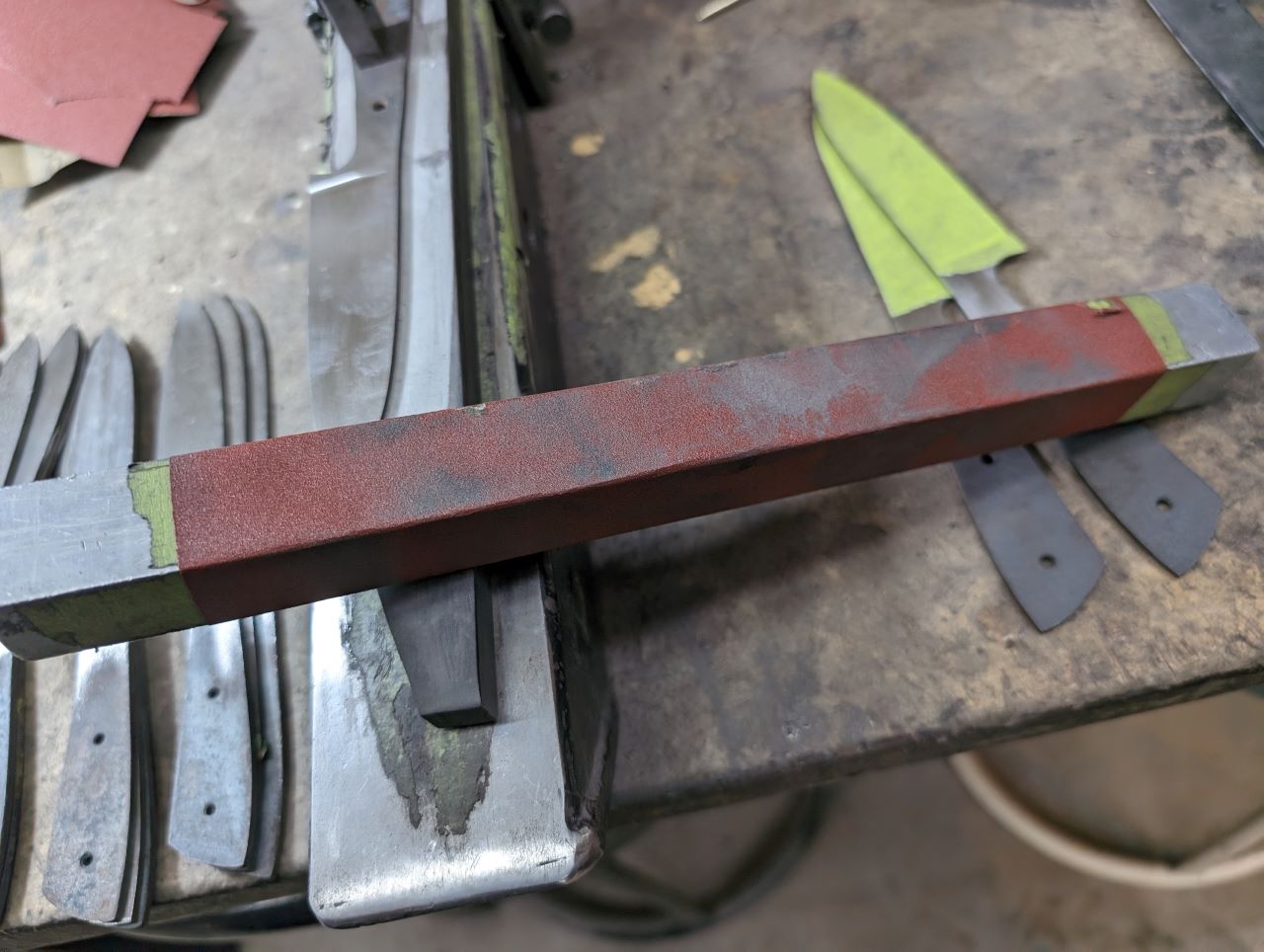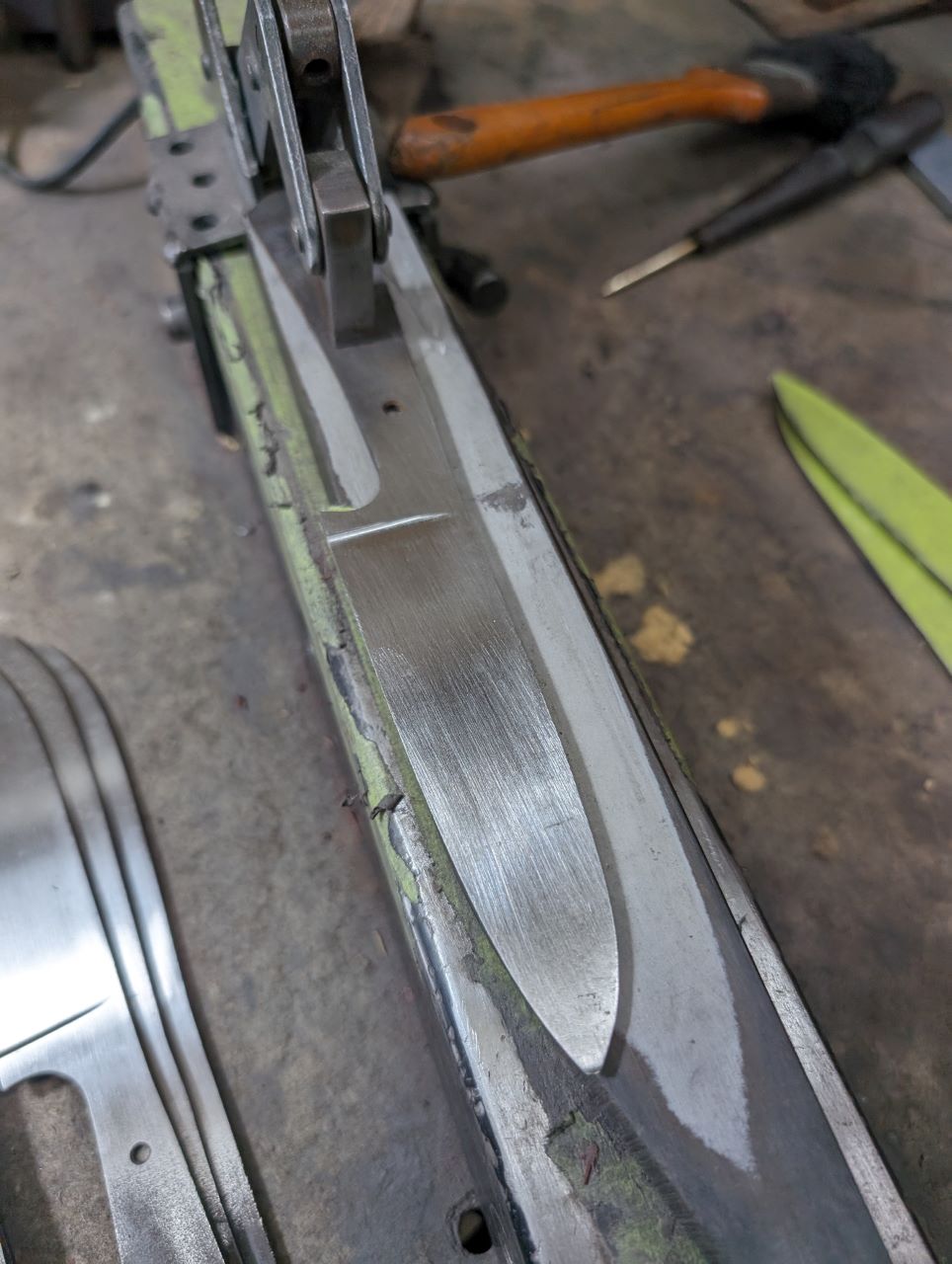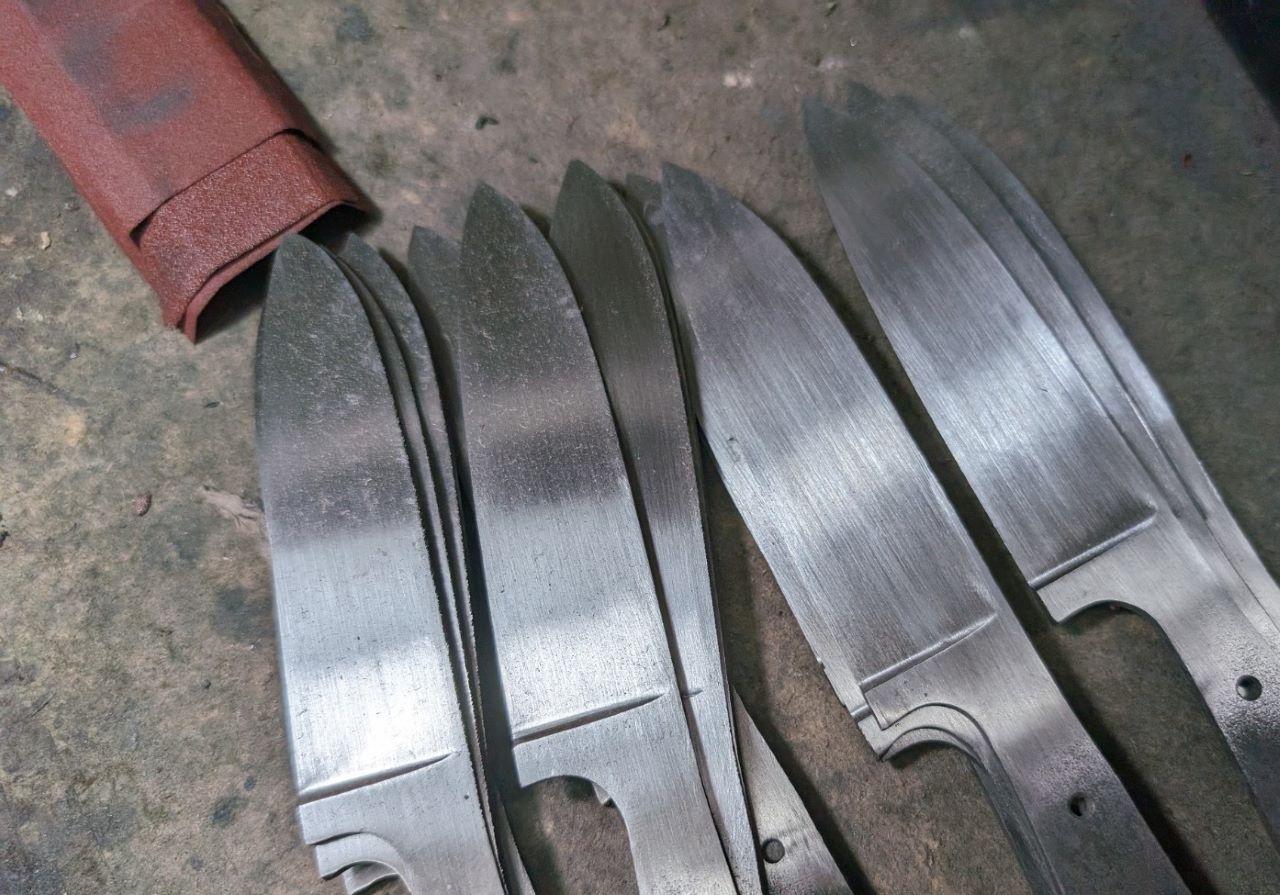 Hand sanding a knife at Tharwa Valley Forge is not just a process; it's an art form. With a commitment to quality craftsmanship and attention to detail, each blade undergoes meticulous hand sanding to achieve a flawless finish. Its one of the fist things someone notices when picking up a blade, the evenness of finish. All the other embellishment wont distract from a missed scratch on the blade.
Hand sanding a knife at Tharwa Valley Forge is not just a process; it's an art form. With a commitment to quality craftsmanship and attention to detail, each blade undergoes meticulous hand sanding to achieve a flawless finish. Its one of the fist things someone notices when picking up a blade, the evenness of finish. All the other embellishment wont distract from a missed scratch on the blade.
Whether you're a seasoned bladesmith or a novice enthusiast, mastering the technique of hand sanding is essential for creating knives of exceptional beauty and functionality. Here are our top 10 tips on getting a great hand finish on your blade.
1. Start with Quality Sandpaper: Begin your hand sanding journey with high-quality sandpaper specifically designed for metalworking. We recommend starting with a coarse-grit sandpaper one step behind what your last ground with the belt. If you ground at 240 on the belt, go back to 180 grit to hand sand. This will even out any grinding imperfections. Brand s like Rhynowhet or Eaglecut last longer and cut quicker than other brands. They also waterproof and can be rinsed and used again.
s like Rhynowhet or Eaglecut last longer and cut quicker than other brands. They also waterproof and can be rinsed and used again.
2. Stick it: We use a 25mm solid aluminium sanding bar that we stick to the sand paper using a light spray adhesive. This reduces the movement of the paper and increases the cutting ability of the grit. We cover the bar with masking tape so we can easily peel off the sandpaper to change it. You might radius the corners of the bar to get into the plunge lines of the blade.
3. Make sure the blade is firmly held in place: A loose blade is dangerous, as it can move and you can cut yourself. It also reduces the effectiveness of the sandmaper if it wobbes around. A solid bench will help when you put pressure on the blade. Invest in a good clamp or hold down system that is quick to apply and doesntscratch the blade or tang.
4. Use Proper Sanding Technique: Apply even pressure while sanding to avoid creating uneven surfaces or dips in the blade. Use a solid sanding bar to keep the blade flat. Move with even pressure along the blade. Avoid rubbing just a small part of the blade for a long time, it can create divets.
5. Progress through Grits Gradually: Gradually progress through finer grits of sandpaper to refine the blade's surface and remove scratches from coarser grits. We recommend progressing from 120 or 180, to 320, to 600 for an even satin finish. You can go higher if you like.
6. Inspect Frequently: Regularly inspect the blade surface to assess your progress and identify any areas that may require additional attention. Adequate lighting and angling the blade to catch reflections will help to reveal any imperfections or scratches that need to be addressed. Sunlight highlights any missed scratches quickly. And if you need glasses, wear them.
7. Remove Scratches before increasing the grit: If a scratch hasnt come out with the grit you are using now, it wont come out at a higher grit. If you have stubborn scratches, consider going back a grit to remove it then continue on.
8. Protect Yourself: Always wear appropriate personal protective equipment, including safety glasses and a dust mask, to protect yourself from airborne particles generated during the sanding process. A light spray of water, with a little detergent to break the surface tension, can keep the dust down.
 9. Take Breaks and Pace Yourself: Hand sanding can be a time-consuming process, so be sure to take breaks and pace yourself to avoid fatigue or burnout. Remember, patience is key to achieving a flawless finish. Better not rushing it and having to return after the handle is fitted to remove a scratch.
9. Take Breaks and Pace Yourself: Hand sanding can be a time-consuming process, so be sure to take breaks and pace yourself to avoid fatigue or burnout. Remember, patience is key to achieving a flawless finish. Better not rushing it and having to return after the handle is fitted to remove a scratch.
10. Apply a even finish to the blade: To get a clean 600 finish, go to a higher grit like 800 remove all the scratches, then return to 600 and do long even one direction passes to put a 600 grit finish back on the blade.
Hand sanding a knife at Tharwa Valley Forge is a labor of love, requiring skill, patience, and attention to detail. By following these top 10 tips, you can master the art of hand sanding and create knives of unparalleled quality and beauty. So, roll up your sleeves, get some fresh sandpaper, and embark on a journey to transform raw steel into a work of art. Happy sanding and enjoy!